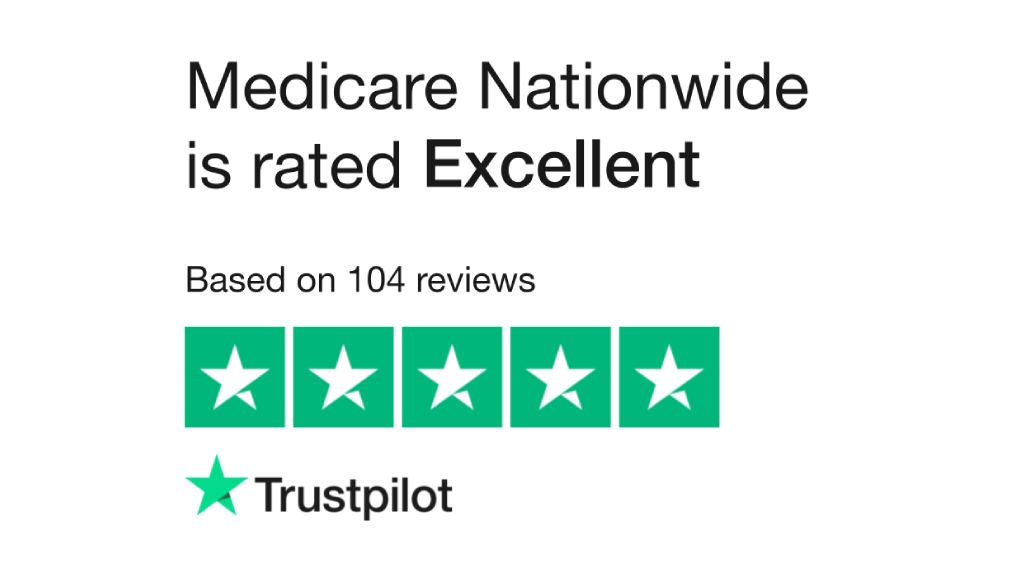
Part C of Medicare Basics
Part C usually goes by a more common name called Medicare Advantage Plans. The simplest way to think about Medicare Part C is that it is an “all in one” plan, bundling Part A, B, and sometimes D into one policy.
Medicare Part C allows you as a Medicare recipient to receive your health insurance benefits through a plan administered by a private commercial insurance company, rather than the government. Currently today, 33% of all Medicare Participants participate in a Medicare Advantage Part C plan. One reason more don’t participate is that Part C plans are not available in every geography even within the same state.
This appointment is meant to alleviate any concerns and there is no-cost or obligation to make a change.
History of Medicare Part C
Before delving into the details of the ways the various plans work because there are many options to choose from with Part C, let’s go through the history of the plan. Understanding why Part C exists will help you understand why people choose to use the plan and whether there are alternatives to Part C.
In 1997, President Bill Clinton signed into law the Balanced Budget Act, which included Medicare C. At that time, Part C was called Medicare+Choice. Medicare Advantage plans did not actually become effective until January 1999. The Balanced Budget Act authorized the CMS (Cabinet for Medicare/Medicaid Services) to contract with public or private organizations to offer a wider variety of health plan options for seniors.
In 2003, the name of Part C was changed to Medicare Advantage under the Medicare Prescription Drug, Improvement, and Modernization Act of 2003. This legislation improved the choice of plans for seniors currently enrolled in Part C. The act changed the way benefits and payments were made. The plans were expanded beyond the original HMO plans when the program began. Also, Part D Medicare (Prescription Drug Coverage) became an option for those within the plan.
Over the life of the program, there have been two major goals the government intends for Part C Medicare Advantage. The first goal is “to expand Medicare beneficiaries’ choices to include private plans with coordinated care and more comprehensive benefits than those provided through traditional Medicare (TM) (MedPAC 2001, chap. 7).” The second goal is “to take advantage of efficiencies in managed care and save Medicare money (Prospective Payment Assessment Commission 1997, chap. 3).”
Medicare Part C Solutions
There are efficiencies gained by creating Medicare Advantage plans and allowing them to be administered by private insurance companies. However, the biggest reason Medicare Part C was created was to help seniors deal with growing out-of-pocket costs not covered under Medicare Part A and Part B.
If you rely only on Original Medicare (Part A & B) to cover your health care costs, you will be stuck with costs you may not be able to pay. Excess costs that doctors are able to charge through Medicare are your responsibility. You are also responsible for copays, deductibles, and co-insurance. Co-insurance can create a substantial amount of out-of-pocket costs that you have to pay.
In 2025, the Part A deductible is $1,676. That must come out of your pocket unless you have a way of covering the cost. For example, you receive doctor’s care, but Medicare only pays 80% of the cost. You are responsible for the remaining 20% of the costs. This cost includes diagnostics tests that doctors may prescribe to identify any health issues.
For example, if your doctor requests and MRI or CT Scan, the costs could be anywhere from $3000 to $8000. After Medicare pays for 80% of the costs, you could find yourself with a bill for $600 to $1600. And that is only if one test is requested. Most seniors can not afford this hit to their budget. Medicare Part C helps with those extra costs that Original Medicare does not cover.
If enrolled in a Medicare Part C plan, you should still receive the same benefits offered by Original Medicare. Your plan may apply different rules, costs, and restrictions on how care is delivered. Make sure you understand your policy and the changes that apply. Some Medicare Part C plans will offer benefits that Medicare does not cover such as dental and vision. Many plans will also bundle in Medicare D, the prescription drug coverage.
Part C of Medicare Insurance Details
We have given you a high-level of what Medicare Part C does, but within the program there are a wide variety of plans that may be available to you.
The most common types of plans are:
1. Health Maintenance Organizations (HMOs)
2. Preferred Provider Organizations (PPOs)
3. Private Fee-For-Service (PFFS)
4. Special Needs Plans (SNPs)
Let’s talk about what each of these Medicare Advantage plans mean for you:
HMOs
HMOs, or Health Maintenance Organizations, are generally cheaper than PPO plans. Since it is more of a budget plan, there are some services that will not be available to you. Here is a quick run-down of what an HMO can or cannot provide for you.
Under an HMO, you will need a primary care physician. In order to access your healthcare services, they need to be coordinated by your primary care physician. This also includes seeing other specialists. Your primary care physician performs like a gatekeeper to your health services. For some, this can be a benefit, because there is one point of contact.
Recipients cannot receive care outside of their network unless it is an emergency. Because only in-network providers are available, you will not need to file a claim.
PPOs
PPO stands for Preferred Provider Organization. Since it is the “preferred” program, it will cost you more, but will also provide more services and flexibility compared to an HMO.
This flexibility is evident when it comes to the primary care physician. Under a PPO, you will not need a referral for any medical services or out-of-network physicians. This extra flexibility makes it easy to see anyone you want. Understand that you may have to file a claim in order to get reimbursed when you obtain services out-of-network.
Private Fee for Service Health Plans
Sometimes you will see this plan referred to by the acronym PFFS plans. Under these plans, you will not need to choose a primary care doctor and referrals are not usually required for specialists. You need to be aware that not all Medicare providers will accept the plan.
These plans used to be incredibly popular because they were not tied to a network, but this changed in 2011. New Medicare law required certain PFFS plans to have a network of providers. If you choose a PFFS plan, make sure you understand the network requirements.
Special Needs Plans (SNP)
Special Needs plans are only available for those who qualify based on special health needs or in specific situations. One of those situations is living in a nursing home. The plans are tailored to meet the specific needs of each individual.
Some of the criteria need to qualify are:
- Chronic Conditions
- Chronic heart failure
- Chronic dementia
- Enrolled in both Medicare and Medicare
- You live in a nursing home
These criteria are not exhaustive. If you think you may qualify for a special needs plan, contact a Medicare professional at Medicare Nationwide
Medicare Advantage Plans Compared to Original Medicare
Still confused on what Medicare Advantage covers? One easier way to understand the differences is to look at a side-by-side chart of what Original Medicare covers versus what Medicare Advantage plans cover.
| Original Medicare | Medicare Part C |
| Includes Part A and Part B. | Includes Part A, B, and sometimes D. |
| Drug Coverage must be purchased separately | Many plan offer extra benefits such as vision, hearing, prescription drug, and dental |
| Out-of-Pocket costs such as 20% coinsurance not included | Out-of-Pocket costs are lower than Original Medicare |
| Coverage is portable to any doctor/hospital in the US that takes Medicare | You will need to use the doctors in the plans network |
| Does not cover you outside the US | Does not cover you outside of the US |
| Supplement Coverage is available for out-of-pocket expenses | You can’t buy or use separate supplemental coverage |
Part C of Medicare Coverage
There are several factors that determine whether you can be eligible for Part C Medicare.
You must live in the designated service area of the specific plan. You must already be enrolled or eligible to enroll in Part A & Part B Medicare.
If you have a union or employer-sponsored insurance plan, you may be able to add a Medicare Advantage plan. You need to be careful because in some cases you may lose your private coverage when you enroll. Make sure to talk to a Medicare professional, before making these decisions.
Individuals with End-Stage Renal Disease are eligible for Medicare regardless of age. Prior to 2021 they were not eligible for Part C unless it was a Special Needs plan. This year the rules change. Now Part C is available to anyone eligible for Medicare.
If you enroll in Medicare Advantage, you will not need to purchase a Medicare supplement policy. In fact, you are prohibited from having both.
This appointment is meant to alleviate any concerns and there is no-cost or obligation to make a change.
Alternatives to Medicare Advantage Plans
After understanding Medicare Advantage, you may decide you don’t want to enter into a managed care plan. In fact, the plans may not be available in your area because the networks are not available. You may want more control or choice over your healthcare decisions. If you travel frequently inside and outside of the country where these networks are present, a Part C plan may not be right for you.
There are alternatives to help cover those out-of-pocket costs. The main alternative to Medicare Advantage is a Medicare Supplement policy. Remember, you can not have both Part C and a Supplement policy. You must choose one or the other.
We have written multiple articles explaining the way Medicare Supplement policies work. THe key to remember is that you have multiple options with Supplement policies and they come in a variety of flavors such as Plan A – N. Each plan has a unique set of coverages, and will provide different coverage for out-of-pocket expenses.
Understand Your Wellness Options
Medicare Part C was a great step to help seniors deal with out-of-pocket costs while dealing with many of the confusing coverages offered with Medicare.
Like every healthcare decision, sometimes you need someone to help you sort through all the options and whether entering a Part C plan is right for you. The coverages can be very broad, but like any plan there are rules and restrictions you need to understand before making a decision.
To understand your options, our agents are ready to help. We have years of experience within the Medicare industry and can help you decide what plan is right for you. You may discover that Part C is perfect for your needs, and we will be there to help you pick the right program.
Prefer to chat by phone? Give us a call at 1-888-559-0103.

